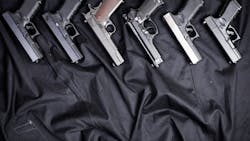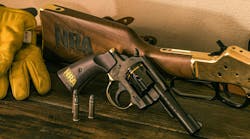Anyone who has been a firearms instructor or police officer/deputy sheriff for any period of time has inevitably been asked, “So, what’s the best gun I can buy for self-defense?” Yes, the wording might be slightly different. It might have something to do with home defense, concealed carry, etc. but it really boils down to some individual asking a person with greater experience and knowledge to specify a single weapon for all purpose usage.
First, it’s smart that they ask. Second, it’s silly (bordering on stupid) that so many want to argue with the answer they get. If they thought they knew better than the person they’re asking, why ask in the first place? Third, most are looking for a make, model, caliber answer when that’s not (hardly ever) appropriate.
One long-term gun-toting professional of my acquaintance will answer, “The absolute best gun to have for self-defense is the one ON YOUR PERSON when you get attacked and need it.” Hands down, this is the most intelligent and accurate answer/outlook I can imagine. I don’t care what the particular handgun is in manufacture, model, caliber or capacity. If it’s what I have available when I need to, and can justify, shoot someone in self-defense (or defense of another), then it’s (in that moment) the best handgun in the world.
Aside from such an answer, the best answer I’ve heard is, “Whatever you are comfortable carrying, competent in handling and shooting, and confident will stop the expected threat.” Let’s consider those three things and how they can balance with each other as you select your preferred self-defense concealed-carry handgun.
“Confident will stop the expected threat” can cover a lot of ground. Let’s be brutally honest: If you knew you were going to get into a gunfight, you’d take a belt-fed machine gun and lots of friends with guns. If your plan is to get in a one-on-one gunfight with someone at the time and place of their choosing, your planning ability sucks. Unfortunately, that is the reality of self-defense. You don’t get to choose when you’re going to come under threat. You choose to prepare yourself as much as you can and remain aware so that you can avoid such situations as much as possible. All that said, what characteristics does a handgun have to have for you to be confident it will stop the threat you might expect to face at some point?
The answer is different for everyone. The large majority of experienced shooters will tell you that the weapon has to chamber a “major caliber.” If you ask for a list of such calibers, you might get some disagreement on one or two of them. Some folks will include .380ACP or 5.7mm; others won’t. Some folks will agree that there are revolver calibers that are sufficient, but they don’t consider the revolver an acceptable self-defense weapon in today’s world because of capacity limits and time to reload. What most will agree with is that .45ACP, 10mm, .357Sig, .40S&W and 9mm are all acceptable self-defense calibers. Some will include the .45GAP and the fairly new .30 Super Carry.
Once you get input on caliber, capacity is usually the next characteristic discussed. How many rounds in the weapon is enough? Some statistics say that the average gun fight lasts 3-5 rounds. If you believe that, then why would you ever need more than six rounds in your gun? Those who have been in gunfights will usually tell you that there’s no such thing as having too many bullets in your gun, so more is always better. At the end of the day, size of the weapon is impacted by the capacity of each magazine (for semi-autos) or the caliber (for revolvers) and you have to be confident that you have enough ammo to defend yourself and extricate yourself from an ugly situation. This leads us into the “comfortable carrying” conversation.
What do you find comfortable to carry? Depending on your size, how you dress and the size of your hands. What is comfortable can vary from the pretty small Glock Model 43 (6+1 of 9mm) to the Para Ordnance Black Ops .45ACP government model (14+1 of .45ACP). There are a lot of popular, dependable, high-quality handguns that fall in between those two sizes. You can get even smaller than the Glock 43 if you “settle” for a weapon chambering .380 ACP, and the conversation becomes fairly convoluted if you include after market equipment as part of your selection choices. For instance, a company called Shield Arms makes magazines that fit the Glock 43 and increase the capacity to 9+1.
The size of the weapon has an impact on how easy it is to conceal and what options are available for carrying it. The compromise so often made is the balance between size and capacity for folks who want more rounds. What is enough? One retired police officer expressed the outlook that anything over five rounds in the gun is more than he used to have when he carried a Smith & Wesson Chief’s Special .38 as his off-duty gun. Even the small Glock 43 with standard magazines offers two more rounds than that. On the other hand, today’s officers who are used to have 17+1 of 9mm in their duty weapon balk at the thought of having essentially one third of that in their off-duty weapon. Again, it's a personal choice that you have to make. In general, the greater the capacity, the longer the grip—and the grip can make the weapon hard to hide. Barrel length also comes into play but usually has more to do with confidence in accuracy than concealability.
The most important part of the equation is what you are competent in handling and shooting. You can carry the greatest capacity of the highest caliber in the world and if you can’t shoot accurately the weapon is worthless when you need it. What caliber and capacity fits your hand best should play an important roll in your selection. Then, how well you can shoot the weapon accurately under stress is the largest consideration of all. About 15 years ago (as this is written) a female officer with relatively small hands preferred the Beretta Model 84 .380 ACP as her off-duty weapon. It fit her hands well and she shot it just as well. Her outlook was that good hits with .380 was far better than misses with anything else… and she was absolutely right. Her competence with the weapon, compounded on her confidence in the caliber and her ability to comfortably conceal the weapon was what determined her selection.
At the end of the day, that’s how you select your preferred off-duty self-defense weapon. What are you comfortable carrying, competent in handling and shooting and confident will stop the threat?



